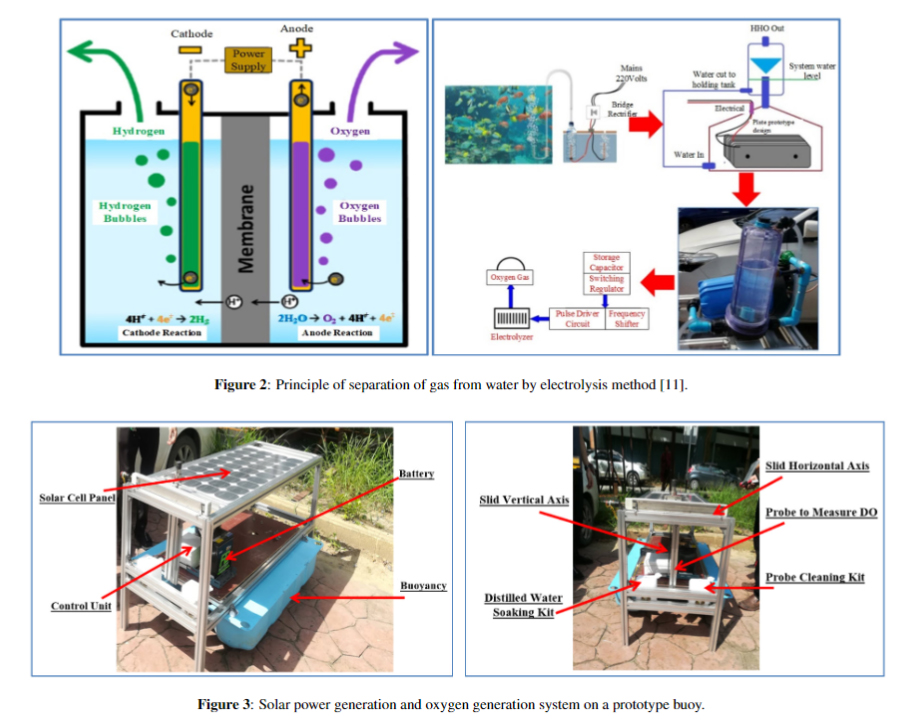Autonomous Oxygenation System on Buoyancy for Aquaculture Ponds with Low Energy Consumption and Non-Mechanical Drives Unit
Main Article Content
Abstract
High electricity consumption to aerate the pond converts electrical energy into mechanical energy to mix air with water to produce dissolved oxygen (DO), which has low efficiency compared to adding pure oxygen to the water of similar energy consumption. The idea is to produce pure oxygen gas with solar energy to aerate the pond water efficiently. Reducing the mortality rate of aquatic animals and increasing productivity are considered to help solve problems for farmers. This research has built an automatic oxygen filling system on a buoy. Moreover, determine the performance of an automated oxygenation system on a buoyancy system for a low-energy aquaculture pond without mechanical propulsion. This article discusses the construction of a floating buoy driven by solar energy and pure oxygen gas generating equipment. The system of automation control, processing and sensors, and data transmission of work with the server of the system is designed based on technology. As a result of research and local knowledge, the developed system can create a technique for producing oxygen gas sufficiently to supply water sources. It also focuses on low-cost development or at least lower than the market price, including in engineering for agriculture to be implemented.
Article Details

This work is licensed under a Creative Commons Attribution-NonCommercial-NoDerivatives 4.0 International License.


